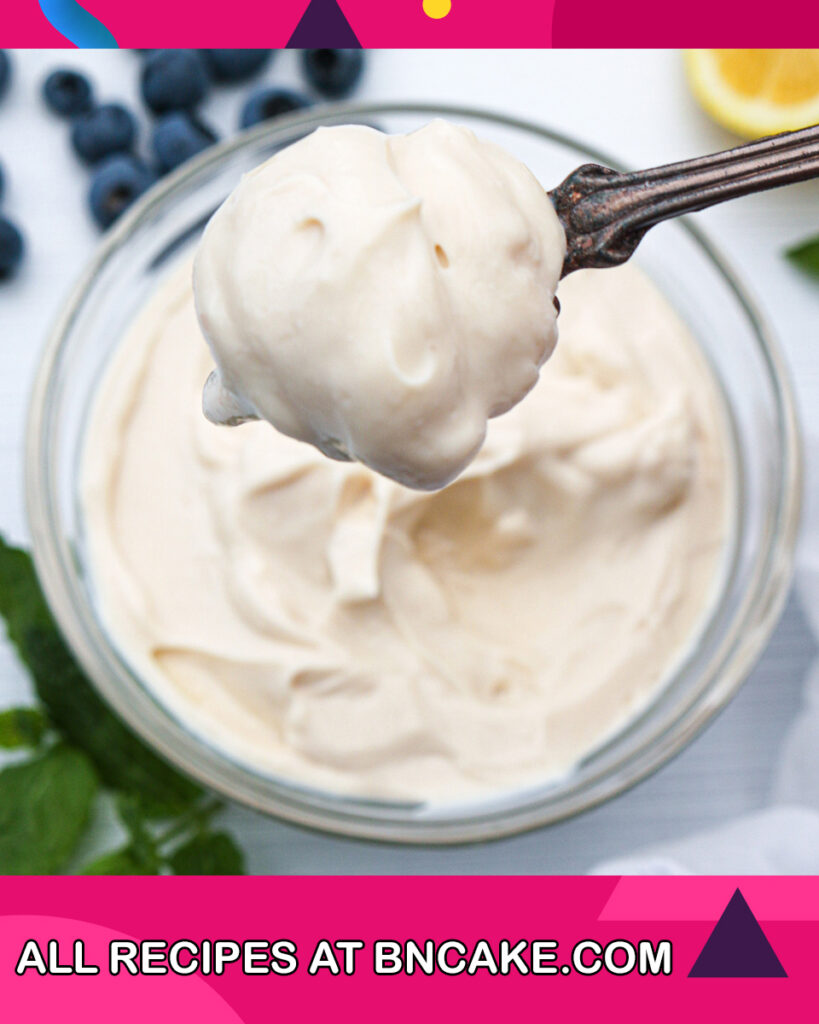Mascarpone cheese, a luxurious and velvety dairy creation, holds a place of distinction in the realm of culinary indulgence. Originating in the Lombardy region of Italy, this delicacy is celebrated for its uniquely creamy texture and mild, lusciously rich flavor. Often likened to a culinary treasure, mascarpone is a soft, fresh cheese made from cream, creating a canvas that inspires both traditional and innovative gastronomic creations. Its versatility ranges from enriching savory dishes to stealing the spotlight in a variety of decadent desserts. As we delve into the world of mascarpone cheese, we discover a timeless ingredient that adds an essence of sophistication and comfort to every bite.

What Is Mascarpone Cheese?
Mascarpone cheese is a creamy, high-fat, and mild Italian dairy product known for its rich texture and versatile culinary applications. It is made primarily from fresh cream, which is coagulated with an acid, typically citric acid or acetic acid, rather than traditional rennet. The resulting curds are then gently drained and processed to create the smooth, velvety consistency that mascarpone is famous for.
Because it’s not aged like many other cheeses, mascarpone retains a creamy and spreadable texture. Its flavor is delicate and slightly sweet, with a subtle tanginess. This makes mascarpone an incredibly versatile ingredient that can be used in both savory and sweet dishes.
Mascarpone is a key component in various Italian and global recipes. In Italian cuisine, it’s famously used in desserts like tiramisu, where its creamy texture complements coffee-soaked ladyfingers. Additionally, mascarpone can be blended into pasta sauces, added to risottos for creaminess, or used as a base for dips and spreads.
Due to its luxurious nature and ability to enhance flavors and textures, mascarpone cheese has gained popularity worldwide and is often considered a staple in the kitchen of culinary enthusiasts and professional chefs alike.

Why You Will Love Mascarpone Cheese Recipe?
- Creamy Indulgence: Mascarpone cheese is renowned for its luxuriously creamy texture. Adding it to your recipes brings a velvety, smooth mouthfeel that’s both satisfying and indulgent.
- Versatility: Whether you’re creating sweet or savory dishes, mascarpone’s mild and versatile flavor profile makes it a fantastic ingredient to experiment with. It complements both delicate and bold flavors, making it suitable for a wide range of culinary creations.
- Elevates Desserts: Mascarpone’s subtle sweetness and creamy texture are perfect for desserts. It can transform a simple dish into a gourmet delight. From classic tiramisu to fruit tarts and cheesecakes, mascarpone takes dessert to a whole new level.
- Easy to Work With: Its soft and spreadable consistency makes mascarpone cheese easy to incorporate into recipes. It blends well with other ingredients, making it a convenient addition to both no-bake and baked dishes.
- Impressive Presentation: Dishes featuring mascarpone cheese often have an elegant and refined appearance, making them ideal for special occasions or when you want to impress your guests.
- Balanced Tanginess: Mascarpone’s slight tanginess adds a pleasant contrast to its creaminess, enhancing the overall flavor of your dishes without overpowering them.
- Richness in Savory Dishes: While often associated with desserts, mascarpone also works wonders in savory recipes. It can add creaminess to pasta sauces, risottos, and spreads without being overly rich.
- Culinary Adventure: Incorporating mascarpone into your recipes allows you to explore new culinary horizons and get creative in the kitchen. Its adaptable nature encourages experimentation and the development of unique flavor combinations.
- Luxury at Home: Using mascarpone in your cooking lets you enjoy a touch of culinary luxury right in your own home. You can create restaurant-worthy dishes without the need for extensive training or expertise.
- Delightful Comfort: The familiarity of mascarpone’s flavor combined with its comforting, creamy texture can evoke a sense of coziness and happiness, making every bite a delightful experience.
Incorporating mascarpone cheese into your recipes can elevate your cooking to a whole new level, introducing a world of culinary possibilities that are both delicious and rewarding.

Ingredients For Mascarpone Cheese
- 2 cups heavy cream (preferably not ultra-pasteurized)
- 1 tablespoon lemon juice or white vinegar
Equipment:
- Large saucepan
- Thermometer
- Cheesecloth or fine mesh strainer
- Mixing bowl
How To Make Mascarpone Cheese
Step 1: Prepare Equipment
- Place a fine mesh strainer over a mixing bowl. Ensure that the strainer fits securely over the bowl and that there’s enough space to allow for drainage.
- Line the strainer with a double layer of cheesecloth, making sure that the cloth drapes over the sides of the strainer.
Step 2: Heat the Cream
- Pour the 2 cups of heavy cream into a large saucepan.
- Heat the cream over medium-low heat, stirring occasionally to prevent sticking or burning. Use a thermometer to monitor the temperature.
- Heat the cream until it reaches a temperature of about 180°F (82°C). This temperature is crucial for proper coagulation.
Step 3: Add Acid
- Once the cream reaches the desired temperature, remove the saucepan from the heat source.
- Add 1 tablespoon of lemon juice or white vinegar to the cream.
- Gently stir the mixture for about 10 seconds to evenly distribute the acid.
Step 4: Curdling
- Allow the cream and acid mixture to sit undisturbed for about 5-10 minutes. During this time, the acid will cause the cream to curdle, forming distinct curds and whey.
Step 5: Strain the Curds
- Gently pour the curdled mixture through the cheesecloth-lined strainer. The whey will drain into the bowl beneath, while the curds will remain in the strainer.
Step 6: Drain and Chill
- Let the curds drain for about 1-2 hours, or until the desired consistency is reached. For a thicker mascarpone, you can let it drain longer.
- Once the mascarpone has reached your preferred texture, carefully gather the corners of the cheesecloth and gently twist to squeeze out any excess whey.
- Transfer the mascarpone from the cheesecloth to an airtight container.
Step 7: Refrigerate
- Cover the container with a lid and refrigerate the mascarpone cheese for at least a few hours to allow the flavors to meld and the texture to further develop.
Step 8: Storage and Use
- Homemade mascarpone can be stored in the refrigerator for up to a week.
- Use your homemade mascarpone cheese in a variety of sweet and savory dishes, such as tiramisu, cheesecakes, pasta sauces, and more.
Creating your own mascarpone cheese adds a delightful touch to your culinary creations, enhancing their flavor and texture with its creamy and indulgent qualities. Enjoy the process of making this versatile ingredient and exploring its potential in your recipes.

How To Serve Mascarpone Cheese
Mascarpone cheese is a versatile ingredient that can be served in various ways, both in sweet and savory dishes. Here are some delightful ways to serve mascarpone cheese:
1. Tiramisu: One of the most iconic desserts featuring mascarpone, tiramisu is a classic Italian treat. Layer mascarpone-enriched cream between coffee-soaked ladyfingers, and dust with cocoa powder for a luscious and elegant dessert.
2. Cheesecakes: Use mascarpone as a key ingredient in your cheesecake recipes for an ultra-creamy and rich texture. It can be blended with other ingredients to create a delectable filling.
3. Fruit Dips: Whip mascarpone cheese with a touch of honey and vanilla extract to create a delicious dip for fresh fruits like strawberries, grapes, and sliced apples.
4. Toast and Bagels: Spread mascarpone on toast or bagels as a creamy and slightly tangy alternative to cream cheese. Top with sliced fruits, jam, or honey for added flavor.
5. Pasta Sauces: Incorporate mascarpone into creamy pasta sauces for a velvety texture and subtle richness. It pairs well with ingredients like spinach, sun-dried tomatoes, and grilled chicken.
6. Stuffed Crepes: Fill delicate crepes with a mixture of mascarpone, fresh berries, or sliced bananas. Dust with powdered sugar or drizzle with chocolate sauce for a delightful breakfast or dessert.
7. Parfaits: Layer mascarpone with granola, fresh fruits, and a drizzle of honey to create a delicious and visually appealing parfait.
8. Savory Dips: Create savory dips by mixing mascarpone with herbs, garlic, and spices. Serve with crackers, breadsticks, or vegetable sticks for a flavorful appetizer.
9. Whipped Cream Substitute: Use mascarpone in place of whipped cream to top desserts, hot chocolate, or coffee. Its luxurious texture adds a unique touch.
10. Frostings: Whip mascarpone with powdered sugar and vanilla extract to create a luxurious frosting for cakes and cupcakes. It’s especially delicious when paired with chocolate cake.
11. Pancake Toppings: Dollop mascarpone on pancakes along with fresh fruits, syrup, or even a drizzle of maple syrup for an indulgent breakfast.
12. Galettes and Tarts: Spread mascarpone on the base of galettes or tarts before adding sliced fruits or roasted vegetables. It creates a creamy layer that complements the other ingredients.
13. Sandwiches: Add a smear of mascarpone to your sandwiches for a unique twist. It works well with both sweet and savory fillings.
14. Crostini: Spread mascarpone on toasted baguette slices and top with ingredients like prosciutto, figs, or roasted red peppers for elegant appetizers.
15. Pancake Fillings: Fill pancakes with a mixture of mascarpone and your favorite fruits or jams to create a delectable breakfast treat.
The versatility of mascarpone cheese allows you to experiment and create dishes that suit your taste preferences. Its creamy texture and mild flavor make it an ideal ingredient for a wide range of culinary creations, whether they’re sweet or savory.

How To Store Mascarpone Cheese
Storing mascarpone cheese properly is essential to maintain its quality and freshness. Due to its high moisture content, mascarpone can spoil relatively quickly if not stored correctly. Here’s how to store mascarpone cheese to ensure its longevity:
1. Refrigeration:
- Mascarpone cheese must be stored in the refrigerator at all times. Avoid leaving it at room temperature for extended periods, as this can promote bacterial growth and spoilage.
- Place the mascarpone container in the coldest part of the refrigerator, typically the back of the bottom shelf.
2. Original Packaging:
- Keep the mascarpone in its original packaging or transfer it to an airtight container if the original packaging has been opened. A container with a tight-sealing lid helps prevent moisture and odors from affecting the cheese.
3. Airtight Seal:
- If you transfer the mascarpone to a different container, ensure that the container has an airtight seal to prevent air and moisture from entering.
4. Avoid Cross-Contamination:
- Store mascarpone away from strong-smelling foods in the refrigerator, as it can easily absorb odors. It’s best to keep it in a separate section or container.
5. Consume Promptly:
- Mascarpone cheese is best enjoyed when it’s fresh. Consume it within a week or according to the expiration date indicated on the packaging. Freshness impacts both the flavor and texture of the cheese.
6. Check for Spoilage:
- Before using mascarpone, visually inspect it for any signs of spoilage, such as mold, an off smell, or unusual texture. If you notice any of these signs, discard the cheese.
7. Freeze for Extended Storage:
- If you have excess mascarpone that you won’t be able to consume within a week, you can freeze it for later use. However, note that freezing can alter the texture somewhat. To freeze, place small portions of mascarpone in airtight containers or resealable plastic bags, removing as much air as possible. Thaw frozen mascarpone in the refrigerator before using.
8. Avoid Temperature Fluctuations:
- Rapid temperature changes can affect the quality of mascarpone. Avoid placing it near the refrigerator door, where temperatures can fluctuate more often.
Remember that the quality of mascarpone cheese will decline over time, even when stored properly. To enjoy the best taste and texture, use mascarpone within its recommended timeframe and follow these storage guidelines diligently.
Other Delicious Dessert Recipes To Try
Tips And Tricks For Mascarpone Cheese
Here are some helpful tips and tricks to make the most of working with mascarpone cheese:
1. Choosing the Right Mascarpone:
- Opt for high-quality mascarpone made from fresh cream. Look for brands that use minimal additives for the best flavor and texture.
2. Handling Mascarpone:
- Mascarpone is delicate, so handle it gently to avoid compacting or damaging its creamy texture.
3. Softening Mascarpone:
- If your mascarpone is too firm, let it sit at room temperature for a few minutes before using. Avoid microwaving it, as high heat can affect its texture.
4. Mixing Mascarpone:
- When using mascarpone in recipes, avoid overmixing. Overmixing can lead to a loss of its fluffy texture.
5. Sweetening Mascarpone:
- When sweetening mascarpone for desserts, use powdered sugar instead of granulated sugar. Powdered sugar blends more smoothly.
6. Experiment with Flavors:
- Mascarpone’s mild flavor makes it an excellent base for experimenting with various flavorings. Add vanilla extract, citrus zest, cocoa powder, herbs, or spices to create unique variations.
7. Balancing Savory Dishes:
- When using mascarpone in savory dishes, balance its creaminess with acidic or savory ingredients like lemon juice, herbs, or grated Parmesan.
8. No-Bake Desserts:
- Mascarpone is ideal for no-bake desserts due to its rich and creamy texture. It sets well and retains its shape when chilled.
9. Room for Creativity:
- Don’t hesitate to incorporate mascarpone into your favorite recipes or experiment with new ones. Its versatility allows for endless culinary creativity.
10. Serving Temperatures:
- Mascarpone is typically served chilled, but for some recipes, you might want to allow it to reach room temperature for optimal flavor release.
11. Last-Minute Elegance:
- Mascarpone can elevate simple dishes into gourmet creations. Keep it on hand for last-minute additions to both sweet and savory recipes.
12. Storage for Dips and Spreads:
- If you’re making dips or spreads with mascarpone, refrigerate them and let them sit at room temperature for a short while before serving to allow flavors to meld.
13. Layering in Desserts:
- When using mascarpone in layered desserts, like parfaits or trifles, alternate layers of mascarpone with fruit, cake, or other components for varied textures.
14. Creative Plating:
- Use a pastry bag to pipe mascarpone onto desserts for elegant presentation, or use it as a base for building visually appealing dessert plates.
15. Controlled Sweetness:
- If a recipe calls for sweetening the mascarpone, start with a smaller amount of sweetener and adjust to taste. You can always add more if needed.
16. Pairing with Wines:
- Mascarpone’s mild flavor and creamy texture make it an excellent pairing with various wines, such as dessert wines, white wines, or even some red wines.
Remember that practice makes perfect. As you become more familiar with working with mascarpone cheese, you’ll discover the best ways to incorporate it into your culinary creations for maximum enjoyment.

FAQs And Troubleshooting
Certainly! Here are some frequently asked questions and troubleshooting tips for working with mascarpone cheese:
FAQs:
Q1: Can I substitute mascarpone with cream cheese?
A1: While mascarpone and cream cheese have different textures and flavors, they can sometimes be used interchangeably in certain recipes. However, keep in mind that mascarpone is milder and creamier than cream cheese, so the substitution may slightly alter the final dish.
Q2: How can I thicken mascarpone that’s too runny?
A2: If your mascarpone cheese is too runny, you can try draining it further by placing it in a fine mesh strainer lined with cheesecloth and refrigerating it for a few hours. This can help remove excess moisture and thicken the cheese.
Q3: Can I freeze mascarpone cheese?
A3: While mascarpone can be frozen, its texture may change slightly after thawing. Frozen mascarpone might become grainy or separate upon thawing. If you plan to freeze it, use it in recipes that don’t rely on its original creamy texture, like sauces or cooked dishes.
Q4: How long does homemade mascarpone last?
A4: Homemade mascarpone should be consumed within a week if stored properly in the refrigerator. Its freshness affects both its taste and texture.
Q5: Can I use mascarpone in hot dishes?
A5: While mascarpone can be used in hot dishes like pasta sauces, it’s important to add it at the end of cooking and avoid excessive heat. High heat can cause mascarpone to curdle or separate.
Troubleshooting:
Issue: Mascarpone is too thick.
- Solution: Let the mascarpone sit at room temperature for a few minutes to soften before using. You can also gently fold in a small amount of heavy cream to achieve the desired consistency.
Issue: Mascarpone is lumpy or curdled.
- Solution: If the mascarpone appears lumpy or curdled, try using an immersion blender or food processor to smooth it out. Add a small amount of cream and blend until the desired texture is achieved.
Issue: Mascarpone has a sour taste.
- Solution: Mascarpone cheese should have a mild, slightly sweet flavor. If it tastes sour, it might be over-acidified. Use less lemon juice or vinegar next time to prevent excessive tanginess.
Issue: Mascarpone is too runny.
- Solution: If your mascarpone is too runny, you can try draining it further by placing it in a fine mesh strainer lined with cheesecloth. Refrigerate it for a few hours to remove excess moisture and thicken the cheese.
Issue: Mascarpone absorbs odors from the fridge.
- Solution: Store mascarpone in an airtight container to prevent it from absorbing odors from other foods in the fridge.
Issue: Mascarpone separates when mixed into a hot dish.
- Solution: If adding mascarpone to a hot dish, do so off the heat and gently fold it in. Avoid excessive stirring or high heat, as this can cause the cheese to separate or curdle.
Remember that practice and experimentation will help you become more comfortable working with mascarpone cheese. If you encounter challenges, don’t hesitate to troubleshoot and adjust your techniques for the best results.
Nutrition Information
Here is the approximate nutritional information for a typical serving of mascarpone cheese (1 tablespoon, about 15g):
Calories: 50, Total Fat: 5g, Saturated Fat: 3g, Cholesterol: 15mg, Sodium: 10mg, Total Carbohydrates: 1g, Dietary Fiber: 0g, Sugars: 1g, Protein: 1g
Please note that these values are approximate and can vary based on the brand and specific composition of the mascarpone cheese. Additionally, portion sizes can differ, so it’s important to check the nutrition label on the packaging for accurate information. Mascarpone cheese is rich and creamy, so it’s best enjoyed in moderation as part of a balanced diet.






